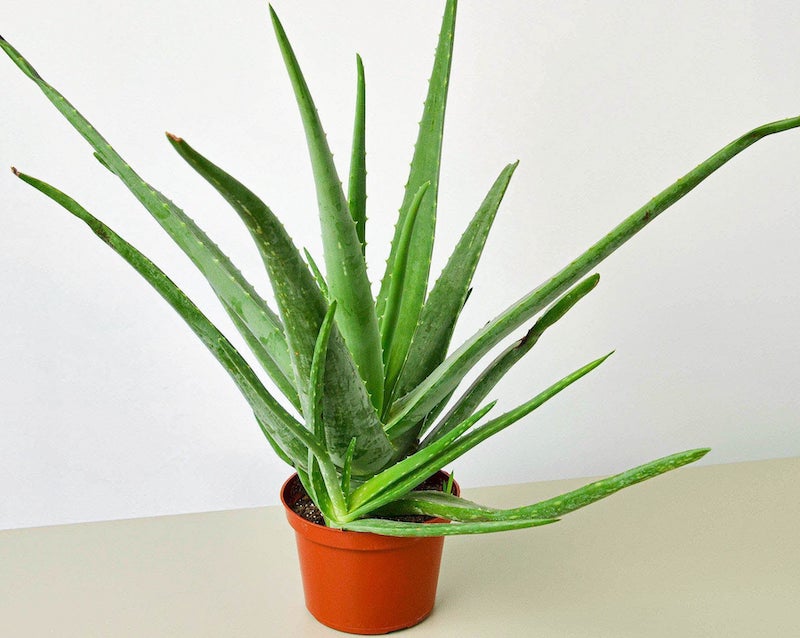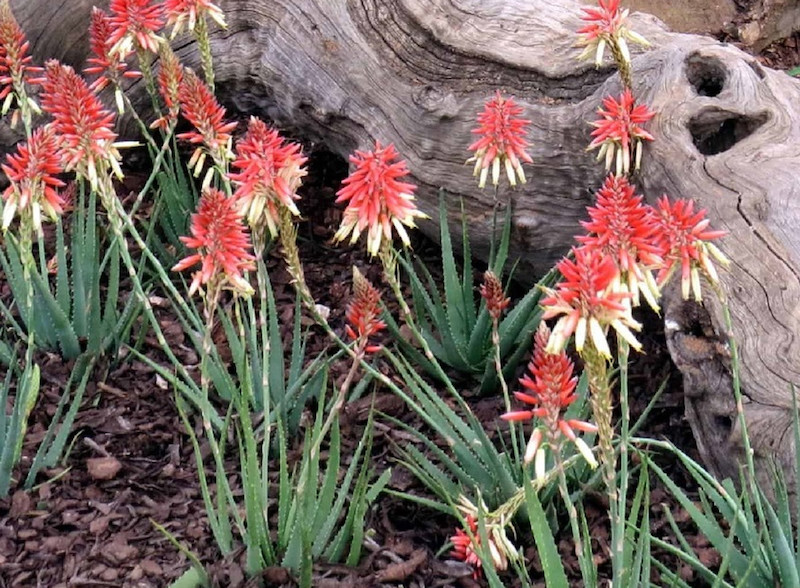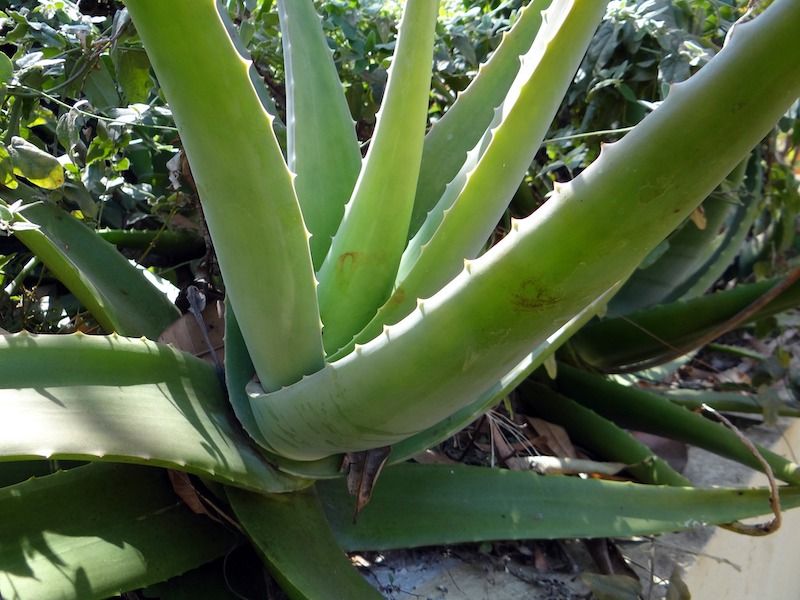Growing Aloe
There are over 300 types of Aloe plants, and while they come in different shapes and sizes, they all require similar care. Aloe plants are possibly the most well-known succulents, and they make wonderful houseplants for beginners since they require minimal maintenance to thrive. Aloe is a tropical plant that prefers dry climates. The long, lance-shaped foliage is green and may have yellow or white variegation, depending on the cultivar. The leaves grow in a rosette formation from a center point and contain a soothing gel that can treat burns and skin irritations. Mature plants push out tall flower spikes.

Aloe Sunlight Requirements
Place aloe plants in a south- or east-facing window where they can receive bright indirect sunlight. This plant likes plenty of light, which is necessary for this fast-growing plant to thrive. Direct sunlight may burn the leaves, while too little light may cause the tall leaves to become unstable and flop over. Periodically rotate the pot, so each side receives sunlight. Even sunlight distribution helps the plant grow strong and upright and prevents it from leaning as it reaches for more sunlight.
Planting Aloe
Plant aloe in dry soil that has excellent drainage. This plant is vulnerable to root rot, and drainage is important. Aloe plants naturally grow in poor-quality soil, so plant them in a succulent or cactus mix, or create your own mix by combining potting soil equal parts sand or perlite. Plants thrive in soil that is slightly acidic, although aloe plants are adaptable and can adjust to varying conditions. Aloe plants don’t mind being somewhat rootbound, but overgrown plants can become top-heavy and may fall over. Repot when the roots emerge through the drainage holes and the plant has outgrown its pot. Transplant to a larger container or divide the plant into several smaller plants and repot them in an appropriately sized container.

Watering Aloe
As a succulent, aloe plants store water in their leaves to sustain themselves for extended periods without moisture. Wait until the soil is completely dry before watering aloe plants. Feel the soil, use a moisture meter, or pick the container up to gauge the weight and dampness of the soil. The leaves may appear puckered or shriveled if the soil is too dry. Water the plant right away to help the plant bounce back. Aloe appreciates bottom-up watering, where the pot is placed in a tray of water for 30 minutes, and water is absorbed through the bottom of the pot. These plants are semi-dormant during the darker winter months and require less watering, usually only once a month. Aloe prefers low humidity, so select a naturally dry area.
Fertilizing Aloe
Aloe plants are not heavy feeders. This plant has acclimated to growing in low-quality desert soil, so it only needs a little nutritional help to thrive. Houseplants can benefit from an annual feeding in the spring. Fertilizing potted aloe plants can help them push out new growth and bloom. Feed potted aloe plants using a diluted 10-40-10 fertilizer or a formula for succulents and cacti. Use a water-soluble plant food that can be given during regular watering.
Common Aloe Problems
Overwatering is the biggest problem in caring for aloe plants. Overwatered plants may develop root rot, soft leaves, or fungus. Yellowing on the leaves is a sign of too much water. Letting the soil dry out is essential because this is not a thirsty plant. Feel the soil to determine the level of dampness, and if you are unsure if you should water your aloe plant, wait another day or two and check back. Underwatering is also not good for aloe plants, but it is less damaging than overwatering.
Propagating Aloe
Propagating aloe is easy because these plants do most of the work on their own. Mature plants will send out offshoots or pups. These baby plants will grow next to the parent plant and share the same root system. As the pup grows, it will get bigger and establish its own root system. Pups can be removed from the parent plant when they are a few inches tall. New plants can be planted in their own container.

Growing Aloe Outdoors
Aloe plants can be grown outdoors, but be mindful of the conditions. Aloe plants like to dry out between watering and should be moved to a protected area during heavy periods of rain. Place the plant in an area that receives morning sun and afternoon shade. Aloe plants are not cold tolerant, so move the plants outside when there is no threat of frost. Relocate the plants inside before the fall weather turns cold.
 |
Author Alison Cotsonas - Published 03-09-2023 |
